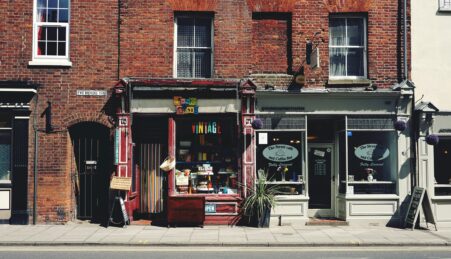By Simone Richardson
From visiting Roy Litchenstein’s Drowning Girl painting in New York’s MoMA, to tracking down his El Cap de Barcelona sculpture in the heart of the Spanish city’s port, it was only polite to give a visit to the so-called ‘architect of pop art’s’ In Focus Artist Room exhibition at Liverpool’s Tate Gallery.
Litchenstein’s iconic comic-strip imagery is recognisable to most, yet his fascination with shifts in culture and politics stimulating influence in his work, remains uncommon knowledge (until now).
The display, consisting of over 20 pieces and spread among two connecting rooms, served this very purpose. It led us through his work of the late 1950s with the consistent style of exaggeratedly imitated commercial printing techniques, including the very distinct palette of primary colours and the use of ‘Ben-day dots’ as a shading method.
Moving on through the 60s we see that Litchenstein’s inspiration for romance and war comics, reflect seamlessly in his 1963 oil-paint canvas pieces In The Car and Whaam! (the latter being a personal favourite due to the irony in translating damage and destruction as captivating symbols of pop beauty).
Roy’s visual repertoire began to develop into more scenic comic book imagery, including water, reflection and landscapes. With this new found curiosity, the artist began to explore his versatility with the introduction of new materials. Sunrise (1965) and Wall Explosion II (1965) were both made up of acrylic on steel and The Three Landscapes (1971) was a three-screen wall installation and interestingly his only work with film.
‘Borrower’ of existing comic art and bearer of various ‘copy-cat’ nicknames, Litchenstein has evidently received some stick over the years for his supposed lack of originality. In a time where pre-existing media is seen as inspiration, often acting as a stimulus for modern-art adaptation, I find it so surprising that some do not consider Roy Litchenstein’s work ‘real art’.
However, this is a view I did not have prior to visiting the exhibition. I was previously uneducated in his motives, influences and inspirations, a significant one being his performed adaptations of other artist’s work. My favourite piece of the collection Water Lily Pond with Reflections (1992), took the concept of Monet’s Water Lilies but used modern interpretation, key to Litchenstein’s style, to create something completely original. Similarly, Modern Art I and Modern Art II (both 1996) used Picasso’s concept depicting fragments of a face seen from multiple angles, whilst implementing abstract patterns such as patches of dots and diagonal stripes.
If not just a cultural day-out, I believe the exhibition to be an opportunity. One to explore the life of a leading figure of the pop art movement, who so daringly blurred the lines of originality and authorship whilst maintaining a signature style identifiable to most. Like any gallery, the walls stood bare and the rooms empty, yet Litchenstein’s work created quite the contradictory effect. Whether you know something about art or not, each piece dominates your attention and provokes a search for context (what happened In The Car to make her so frosty?).
And that’s not even the best thing. All this, and its completely admission free.





Leave a reply